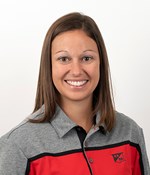Product and Agronomy Research (PAR) Results: Harvest Timing of Corn & Phantom Yield Loss
BY Dairyland Seed Agronomy Team
HARVEST TIMING OF CORN & PHANTOM YIELD LOSS
Wabash, IN - Year Two (2021-2022)
Description:
Dairyland Seed agronomists wanted to verify whether yield is lost by allowing corn to dry in the field as opposed to harvesting corn at a higher moisture. As reported in previous years, studies have shown that optimum harvest moisture is 25%. Based on this information there is continued interest in harvest moisture and timing, and how that impacts yield. Harvesting at a higher moisture has shown to reduce mechanical damage and loss. In addition to that mechanical loss there exists some unexplained yield loss. The grain yield lost between an earlier harvest and allowing the corn to field dry is often referred to as phantom yield loss. The hybrids used range from 105 day to 112 day in maturity (DS-4510Q™, DS-4878Q™, DS-4917AM™, DS-5095AM™, DS-5161Q™, DS-5250AM™ and DS-5279Q™). In 2022 this trial was planted on April 23 at a population of 33.600 seeds per acre.

Discussion:
This two-year comparison across hybrids indicates a clear yield advantage for harvesting in late September to early October. Each year we found a statistical difference in harvest timing. Of interest is the marked difference both years from early October to mid-October. It is also noted that moistures both years dropped considerably from September harvest date to early October harvest dates. The yield however did not change as much. As we moved to mid-October, yield loss was more prevalent and moisture loss had not changed to the same degree. Data would support the advantage early harvest. For those wanting to wait and field dry even more, our research may suggest the ideal time to be early October time frame. At that timing we peaked out on moisture loss and yield loss is limited. Multi-year data would say we were seeing a 10 bushel advantage for early harvest.
*Figure 1 and Figure 2 results from Wabash, IN PAR location
 |
 |
 |
 |
 |
| Brian Weller Western Region 507.456.3034 |
Dan Ritter Central Region 219.863.0583 |
Branden Furseth Northern Region 608.513.4265 |
Mark Gibson Eastern Region 260.330.8968 |
Amanda Goffnett Eastern Region 989.400.3793 |
